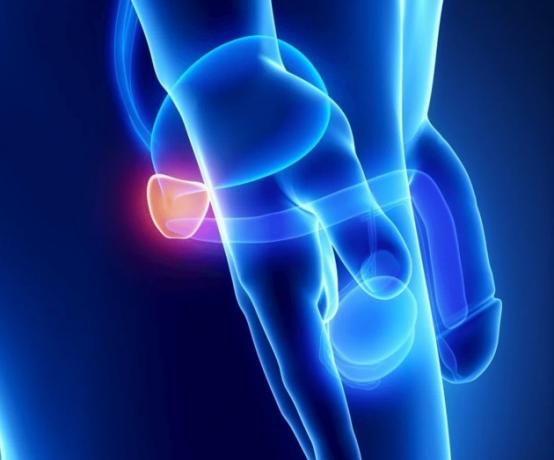Blood is made up of some cell types that are immersed in a liquid composed mainly of water and some proteins (albumin, globulin, fibrinogen and prothrombin). Among the cell types, we can mention leukocytes, red blood cells and platelets, which are actually fragments of cells called megakaryocytes.
At Red Cells, also called erythrocytes and red blood cells, are circular cells responsible for transporting oxygen throughout our body. These cells have the characteristic of being anucleated when mature. After losing their core, they acquire a biconcave shape, presenting only a thin layer in the central portion. Their diameter is approximately seven micrometers, but they can increase in size at low blood pH.
In a woman, the concentration of red blood cells is approximately 4,700,000 per cubic millimeter, whereas in men it is 5,400,000. These values can vary and are often related to physical exercise and emotional state.
The process of producing red blood cells, called erythropoiesis, takes place in the red bone marrow and is regulated by erythropoietin, a hormone produced in the kidneys of adults. Hypoxia (low oxygen concentration) is a great stimulator of the production of this hormone. At high altitudes, for example, erythropoietin is produced in large quantities, thus initiating an increase in red blood cell production.
It is common for athletes to train at high altitudes for a greater production of erythropoietin, thus the production of red blood cells increases and, consequently, their capacity to transport oxygen to the tissues also increases. elevates. This makes the person perform better in competitions like running and cycling. Some athletes use a synthetic version of this hormone, however, the practice is considered doping.
Hemoglobin, a protein that colors the blood and acts to transport oxygen, is found inside red blood cells and is synthesized during erythropoiesis. In man, the main hemoglobin found is hemoglobin A, which is composed of two alpha chains and two chains called beta.
Do not stop now... There's more after the advertising ;)
Red blood cells are cells that live for an average of 120 days, after which they are mainly destroyed in the spleen. This organ is oval in shape and is located in the upper left portion of the abdomen, below the diaphragm and behind the lower ribs.
When there is a decrease in red cell synthesis, an increase in its destruction rate, deficient red cell production, blood loss or even a reduction in hemoglobin production, we have the anemias. Among the main types of anemia, we can mention the sickle cell anemia, iron deficiency anemia and thalassemia.
Sickle cell anemia is a genetic disease characterized by the presence of sickle-shaped red blood cells, which have rapid hemolysis and usually cause obstruction of the capillaries. This anemia, due to genetic causes, is not treated with an increase in dietary iron. Anyone who has this disorder is resistant to malaria, so it is common in areas that have a high incidence of this disease.
In iron deficiency anemia, there is a decrease in hemoglobin levels, which usually occurs as a result of blood loss or nutritional deficiency. The main symptoms are pale skin, lack of mood, learning difficulties and lack of appetite. Generally, the indicated treatment is the ingestion of foods that contain a great amount of iron, such as meat and dark green leaves.
Thalassemia is a genetic disease that causes an incorrect production of hemoglobin chains. It can produce anything from mild anemia to severe anemia, in which the individual will need a blood transfusion for life.
by Vanessa dos Santos
Graduated in Biology



